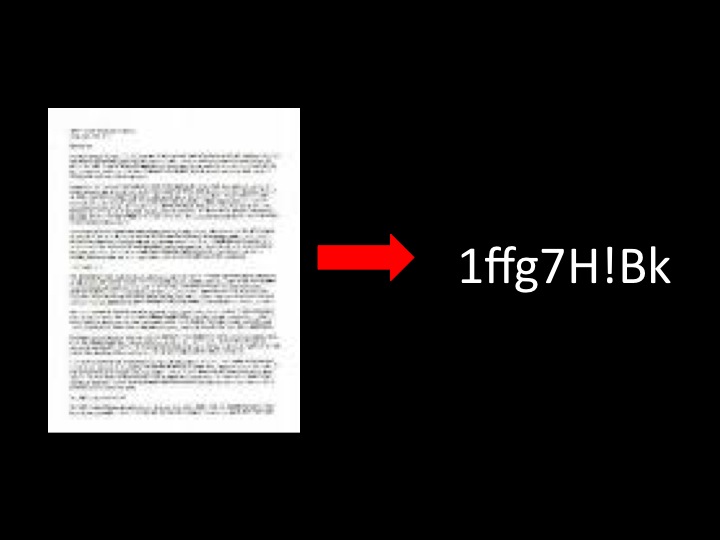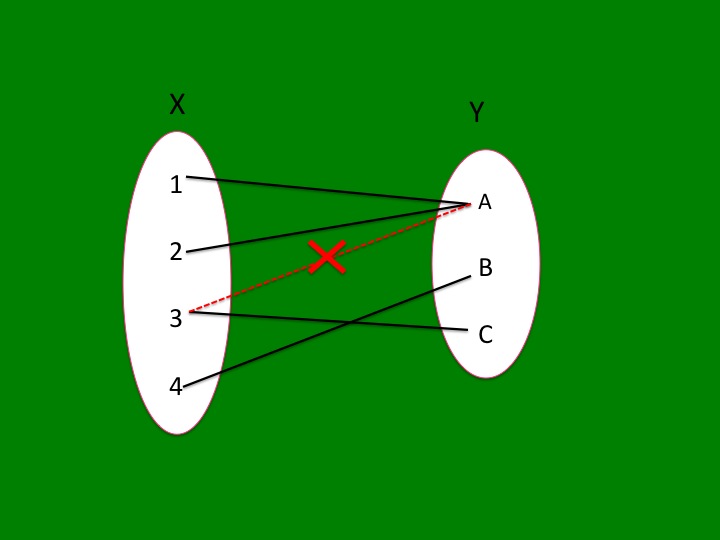Team:Davidson-Missouri Western/Ideal Hash Function Characteristics
From 2008.igem.org
(Difference between revisions)
| (2 intermediate revisions not shown) | |||
| Line 6: | Line 6: | ||
!align="center"|[[Team:Davidson-Missouri_Western/Notebook|Notebook]] | !align="center"|[[Team:Davidson-Missouri_Western/Notebook|Notebook]] | ||
|} | |} | ||
| + | == '''Overview''' == | ||
| + | A cryptographic hash function takes as input a message or document of any size, and returns a fixed length hexadecimal string as output, called the '''hash value'''. The hash value is essentially the "signature" of the input document, and can be used to verify that a document has not been tampered with. The hash function should be sensitive to small perturbations in the input message, producing very different hash values for highly similar, but not identical, documents. This page describes the characteristics and ideal properties of a cryptographic hash function. | ||
| - | + | =='''Characteristics'''== | |
| - | '''Reduces Text Down for Authentication''' | + | * '''Reduces Text Down for Authentication''' |
| - | [[Image:Slide01.jpg|350px]] | + | [[Image:Slide01.jpg|350px|lalign="right"]] |
| - | '''Not Reversible''' | + | * '''Not Reversible''' |
| + | ** From any given output, it would be virtually impossible to work backwards to get the input. | ||
| - | '''Each Input Has Exactly One Output''' | + | * '''Each Input Has Exactly One Output''' |
| + | ** Each input will always hash to the same single output (a property of any function). | ||
| - | '''Arbitrary Input Length and Fixed Output Length''' | + | * '''Arbitrary Input Length and Fixed Output Length''' |
| - | Documents of unlimited length can be hashed and all documents should hash to outputs of equal (brief) length. Enables user to | + | ** Documents of unlimited length can be hashed and all documents should hash to outputs of equal (brief) length. Enables user to quickly detect document tampering and ensures hash values do not contain information about the length of the original document. |
| - | '''At Least One Collision''' | + | * '''At Least One Collision''' |
| - | A collision occurs when two inputs hash to the same output. | + | ** A collision occurs when two inputs hash to the same output. Collisions ensure that each hash value does not correspond to a unique input (in other words, the function is not invertible). |
| - | '''Minimal Collisions''' | + | |
| - | Although | + | =='''Ideal Hash Function Properties'''== |
| + | * '''Minimal Collisions''' | ||
| + | ** Although collisions are necessary, an ideal hash function will equally partition to all possible hash values. | ||
[[Image:Slide02.jpg|350px]] | [[Image:Slide02.jpg|350px]] | ||
| - | '''Unpredictable Collisions''' | + | *'''Unpredictable Collisions''' |
| - | If collisions are predictable, patterns that can define the function become apparent. | + | **If collisions are predictable, patterns that can define the function become apparent. Secure hash functions require a large number of deliberate attempts to create 2 colliding documents. |
| - | ''' | + | *'''Real-Time Computation''' |
| - | + | ** Hash value should be computed for a document in the time it takes to be transmitted. | |
| - | [[Team:Davidson-Missouri_Western/Speed of Spoke Test|Speed of Spoke Test]] | + | ** [[Team:Davidson-Missouri_Western/Speed of Spoke Test|Speed of Spoke Test]] |
| - | |||
| - | |||
<br> | <br> | ||
{| style="color:#1b2c8a;background-color:#0c6;" cellpadding="3" cellspacing="1" border="1" bordercolor="#fff" width="62%" align="center" | {| style="color:#1b2c8a;background-color:#0c6;" cellpadding="3" cellspacing="1" border="1" bordercolor="#fff" width="62%" align="center" | ||
Latest revision as of 02:07, 30 October 2008
| Home | The Team | E. nigma Project | Parts Submitted to the Registry | Notebook |
|---|
Overview
A cryptographic hash function takes as input a message or document of any size, and returns a fixed length hexadecimal string as output, called the hash value. The hash value is essentially the "signature" of the input document, and can be used to verify that a document has not been tampered with. The hash function should be sensitive to small perturbations in the input message, producing very different hash values for highly similar, but not identical, documents. This page describes the characteristics and ideal properties of a cryptographic hash function.
Characteristics
- Reduces Text Down for Authentication
- Not Reversible
- From any given output, it would be virtually impossible to work backwards to get the input.
- Each Input Has Exactly One Output
- Each input will always hash to the same single output (a property of any function).
- Arbitrary Input Length and Fixed Output Length
- Documents of unlimited length can be hashed and all documents should hash to outputs of equal (brief) length. Enables user to quickly detect document tampering and ensures hash values do not contain information about the length of the original document.
- At Least One Collision
- A collision occurs when two inputs hash to the same output. Collisions ensure that each hash value does not correspond to a unique input (in other words, the function is not invertible).
Ideal Hash Function Properties
- Minimal Collisions
- Although collisions are necessary, an ideal hash function will equally partition to all possible hash values.
- Unpredictable Collisions
- If collisions are predictable, patterns that can define the function become apparent. Secure hash functions require a large number of deliberate attempts to create 2 colliding documents.
- Real-Time Computation
- Hash value should be computed for a document in the time it takes to be transmitted.
- Speed of Spoke Test
| Home | The Team | E. nigma Project | Parts Submitted to the Registry | Notebook |
|---|
 "
"

